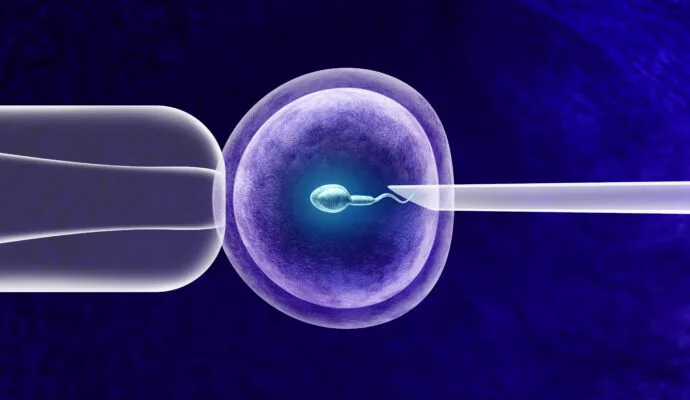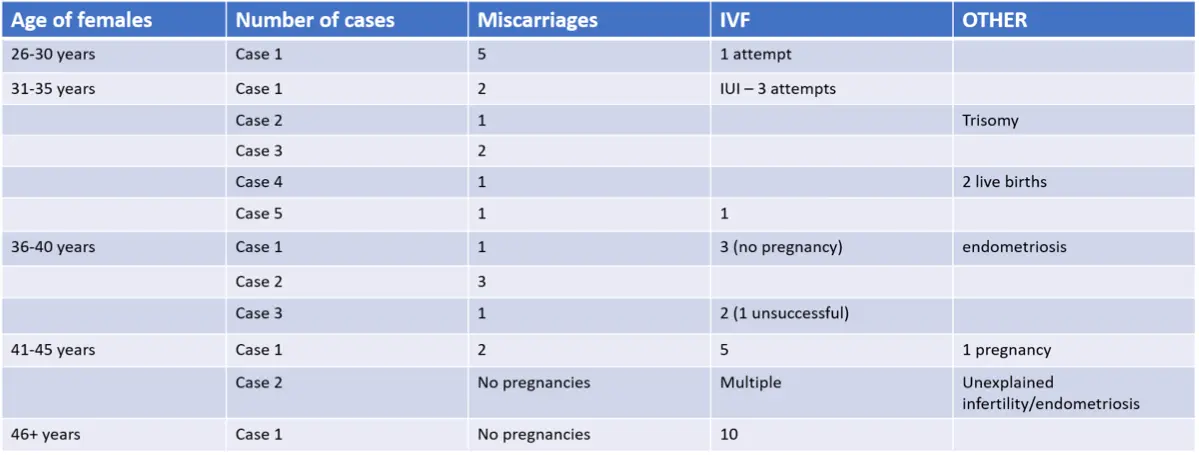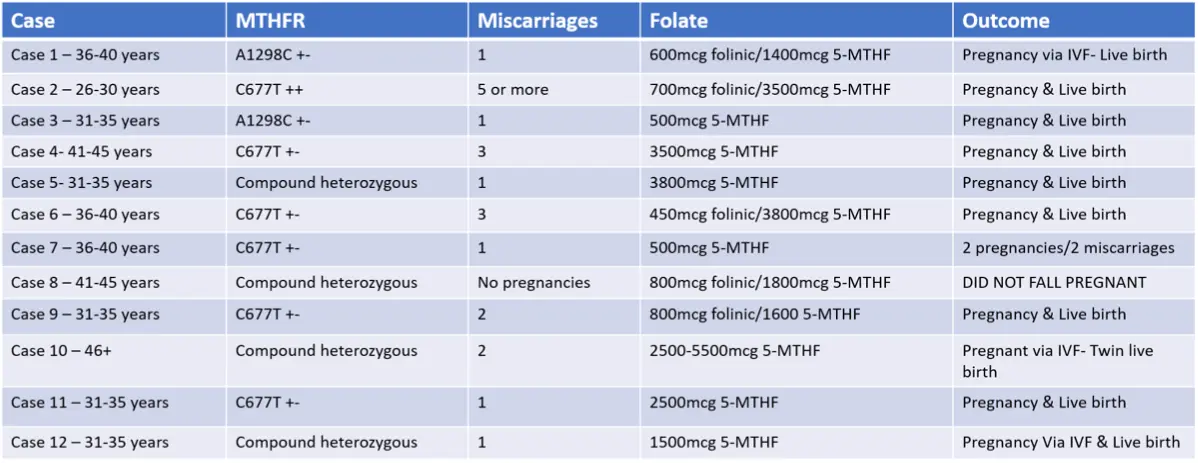
Miscarriage Statistics:
Miscarriage is very common, more common than you think and can affect around 15% of all pregnancies (Laisk et al., 2020) or 23 million pregnancies annually or 44 per minute worldwide (Kuehn, 2021). The spontaneous miscarriage rate varies between 10 to 20%. One study in Israel showed that 43% of women reported a history of one or more spontaneous first trimester miscarriages (Cohain et al., 2017).
Despite these huge numbers, most causes for miscarriage can’t be found and women are told to just ‘keep trying’.
What is the definition of miscarriage?
The World health organisation (WHO) defines miscarriage as the spontaneous loss of an embryo or foetus up to 20 – 22 weeks of gestation(World Health Organisation, 1977). Recurrent miscarriage is defined as two or more pregnancy losses before 22 weeks of gestation (RPL et al., 2018).
Causes of miscarriage
For those where there is a reason for their miscarriage, around 15% of them, the cause may be put down to age, smoking, stress, low progesterone or hypothyroidism (Kuehn, 2021) and most miscarriages have been in the first trimester of pregnancy. The age of the mother has been shown to be the strongest risk factor for miscarriage and some research shows that women over 42 years of age experience rates of miscarriage at 50% and women aged 45 and over associated with 75% rates (Cohain et al., 2017).
Besides chromosomal issues, other causes of miscarriage can include:
Research is key to prevent further miscarriages.
Many hundreds of research studies have been conducted on why women miscarry and it’s interesting to note that some say that the risk of a miscarriage is higher if you’ve had a previous miscarriage (Cohain et al., 2017; Knudsen et al., 1991). One of the largest studies of recurrent miscarriage concluded that 16% of women will miscarry the next pregnancy after their first miscarriage and 25% of women are expected to have a third (Knudsen et al., 1991). But that is NOT what we have found.
What about IVF?
IVF is not always the best option.
After 3 or more miscarriages, many couples are told IVF is their best (and sometimes only) option. Yes, for some couples IVF is a miracle maker! But for others the process of IVF becomes a living nightmare.
We have found IVF, IUI or ICSI is the only option for couples with infertility due to structural (anatomical) issues that cannot be overcome. This includes conditions such as:
- Tubal disorders (e.g. Fallopian tubes have been removed)
- Uterine abnormalities (e.g. two uteruses)
- Certain male sperm defects (e.g. Where the sperm head is defected and cannot penetrate the egg)
- Primary ovarian failure/ primary testicular failure
In these cases, natural pregnancy is just not physically possible and IVF is truly the only option.
In addition, sometimes IVF is advisable to couples who have significant hereditary chromosomal issues, as embryos may be screened before transfer.
However, IVF is not always the best option for couples just because they have experienced a miscarriage, especially those who have “unexplained” miscarriage. In these cases, there is nothing to promise that IVF will by-pass the underlying cause of the miscarriage!
If a couple goes into IVF without ever identifying why they are miscarrying in the first place, the chance of them miscarrying through IVF is just as high as if they kept trying naturally.
I find it very sad to think how often people are led to believe IVF is a magic solution that will by-pass their fertility issues. Especially when their doctors have not taken the time to properly assess the underlying cause.
Research clearly proves that IVF is not always the WHOLE solution.
For example, In Australia in 2018 There were 84,064 initiated IVF cycles which resulted in 15,475 live births. This equates to an 18.4% success rate (UNSW Sydney, 2018).
This means that almost 82% of IVF attempts failed.
IT’S NOT A NUMBERS GAME.
Have you ever been told that IVF is “just a numbers game”? Meaning, the more you try, the more likely you are to get pregnant. This UNSW Sydney report (2018) showed that 23.1% of couples gave birth to a live baby in their first cycle, and 11.6% in their eighth cycle. Proving the more attempts you have at IVF does not equate to an increased chance of success. However, it does equate to a huge financial and emotional burden.
My suggestion to you if you have already had failed IVF treatments, is to hit pause for now. Don’t rush into another cycle because you are afraid you are running out of time.
And if you decide IVF is the right option for you, you’ll be happy to know that including natural preconception care in the 3-4 months prior to IVF will increase your chance of success to 47.1% (Barnes, 2014)

Our research

Carolyn Ledowsky, the founder of MTHFR support has been working with women who have recurrent miscarriage for over 12 years. Her work around folate and genetic issues with folate metabolism has proven that the above statistics are not necessarily true. She found very early on that women with a history of miscarriage or a family history of miscarriage were more likely to have issues with folate metabolism. She found that taking synthetic folate out of both the diet and supplements proved to be a lot more successful. It’s very frustrating when women who continuously miscarry I just told by their doctor or fertility specialist to keep trying. We know, through our clinical practice and helping thousands of women successfully have babies over the last 12 years that you really need to do things differently.
Carolyn’s recent research conducted in her honour’s degree showed that of 12 women with diagnosed infertility, MTHFR genetic polymorphisms (which affects folate metabolism), multiple miscarriage and/or failed IVF had a different response. These 12 women were taken off all forms of synthetic folate (folic acid) and given a more active form of folate (methyl folate) at much higher doses than typically taken in Australia and 10 out of 12 of the women successfully had babies. The tables below highlight the outcome for each of them and the level of methyl folate they were taking to achieve success. This represents an over 91% success rate. The two that did not have a live birth, we suspect one was not taking enough folate and the second we propose that the issue may have been with her partner because we did not have the time nor the resources to include partners in this study.

Table 1 (Women included in the study)

Table 2 (Outcome of treatment)
The results of this trial have now led Carolyn to do her PhD. She is currently a PhD candidate with the University of technology Sydney, conducting a randomised clinical trial measuring folic acid versus methyl folate in women with recurrent miscarriage. The trial will commence recruiting women in September 2022 and finish recruiting in April 2023.
WE NEED THIS RESEARCH TO SHOW DOCTORS AND FERTILITY SPECIALISTS THAT THERE MAY BE A WAY TO PREVENT MISCARRIAGES.
WE CANNOT DO IT WITHOUT YOUR HELP.
If you are interested in donating to support this trial,
click the button below:
For more information and to donate click here.
If you think you might be interested in being a part of this trial, please email Carolyn: carolyn.j.ledowsky@student.uts.edu.au and she will send you the details September 1 when the recruitment for the trial opens.
Kate was one of these people with recurrent miscarriage, listen to Kate’s message.
References:
Cohain, J. S., Buxbaum, R. E., & Mankuta, D. (2017). Spontaneous first trimester miscarriage rates per woman among parous women with 1 or more pregnancies of 24 weeks or more. BMC Pregnancy and Childbirth, 17(1), 1-7.
Knudsen, U. B., Hansen, V., Juul, S., & Secher, N. J. (1991). Prognosis of a new pregnancy following previous spontaneous abortions. European Journal of Obstetrics & Gynecology and Reproductive Biology, 39(1), 31-36.
Kuehn, B. M. (2021, Jun 15). More Comprehensive Care for Miscarriage Needed Worldwide. JAMA, 325(23), 2335. https://doi.org/10.1001/jama.2021.8549
Laisk, T., Soares, A. L. G., Ferreira, T., Painter, J. N., Censin, J. C., Laber, S., Bacelis, J., Chen, C.-Y., Lepamets, M., & Lin, K. (2020). The genetic architecture of sporadic and multiple consecutive miscarriage. Nature Communications, 11(1), 1-12.
RPL, T. E. G. G. o., Bender Atik, R., Christiansen, O. B., Elson, J., Kolte, A. M., Lewis, S., Middeldorp, S., Nelen, W., Peramo, B., Quenby, S., Vermeulen, N., & Goddijn, M. (2018). ESHRE guideline: recurrent pregnancy loss. Human Reproduction Open, 2018(2). https://doi.org/10.1093/hropen/hoy004
World Health Organisation, I. C. f. t. N. R. o. t. I. C. o. D. G. (1977). Manual of the international statistical classification of diseases, injuries, and causes of death : based on the recommendations of the ninth revision conference, 1975, and adopted by the Twenty-ninth World Health Assembly, 1975 revision. https://apps.who.int/iris/handle/10665/40492

